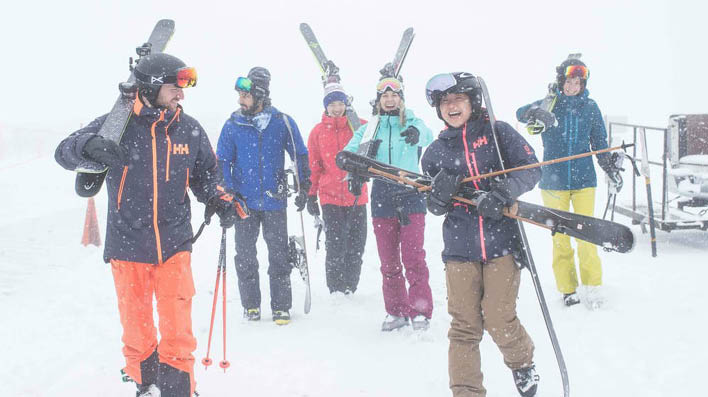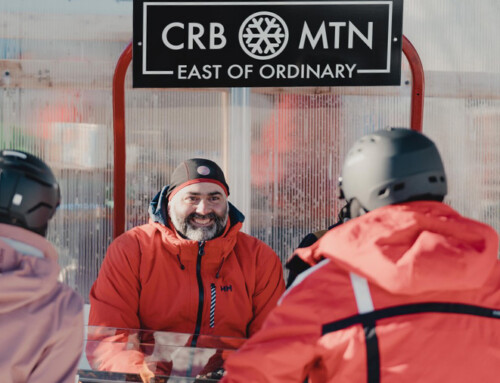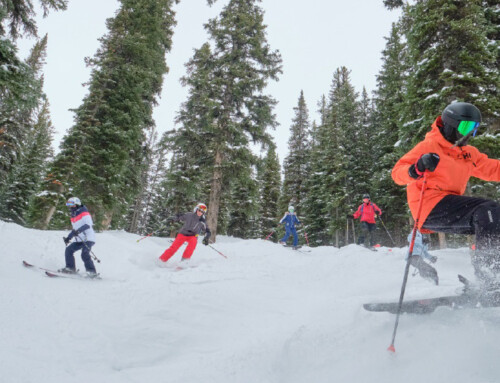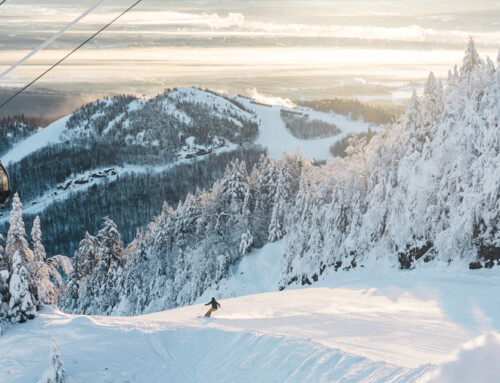This article originally appeared on:
Choosing new downhill skis might feel overwhelming when you’re looking at all the different types of skis (especially if you’re a new skier or are shifting from groomers to powder). But finding your perfect pair gets a lot simpler when you know what to look for and how to narrow down your options.
When you’re choosing downhill skis, here are some things to consider:
- Your skill level: What type of skier are you?
- Where you ski: It’s important to match your skis to the terrain and snow you’re skiing.
- Ski length: Learn what size skis to buy based on your height and weight.
- Ski shape and stiffness: Camber, rocker, sidecut and ski flex affect how skis feel underfoot.
- Choosing skis for kids: Growing kids mean there are a few things to keep in mind.
If you’re a new skier just getting comfortable on green runs, then you’ll want different skis than an expert who’s hard-charging steep slopes. Use the skier types below to help you get started; you can sort skis by these ability levels on mec.ca.
FOR BEGINNER SKIERS
New to skiing? If you’re working on linking and smoothing out turns on mostly green and blue runs, then beginner skis are a great place to start. They’re designed to help you link turns, and many have a softer flex, which is more forgiving if you make a mistake. Also seek out narrower ski widths (measured at the waist, or middle part of the ski) and skis that have combined camber and rocker. The rockered tip and tail curve upwards slightly off the snow, so the skis feel shorter than they actually are to make turning easier.
FOR INTERMEDIATE SKIERS
Confident parallel skiers that ski blue to black runs want skis to support their moves. If you’re working on carving and exploring groomers, powder and mixed terrain, you’ll want a bit more width and rockered tip and tail to help when you start dipping into powder. Skis for intermediates vary in their camber and rocker combinations, and are usually a slightly stiffer than beginner skis.
FOR ADVANCED SKIERS (GROOMERS)
Are black and double-back runs your thing? If you’re a confident, aggressive skier that carves with ease, look for Titanal, carbon or other similar materials that help absorb vibrations to deliver a smooth, stable ride at high speeds. Less flex and a longer body help you tackle a variety of terrain; a narrower ski in the 60–99mm range will make it easier to switch from one edge to the other when you’re carving. Camber and rocker combinations vary to suit your skiing style. These skis are generally very stiff to support you as you carve hard at higher speeds.
FOR ADVANCED SKIERS (POWDER)
Confident, aggressive skiers that are all about powder, steep terrain, and tree skiing need skis to help float through deep snow. You want a fat (100mm+ width), long ski with a rocker tip, or better yet, a full rocker. If you’re thinking of getting into backcountry skiing as well as downhill skiing, look for carbon skis – they’re stiff but lightweight, so you get a fun ski without the weight penalty of a burlier construction. You may also want to check out our article on how to choose backcountry skis.
Check back next week for how to pick skis based on where you’re skiing.









